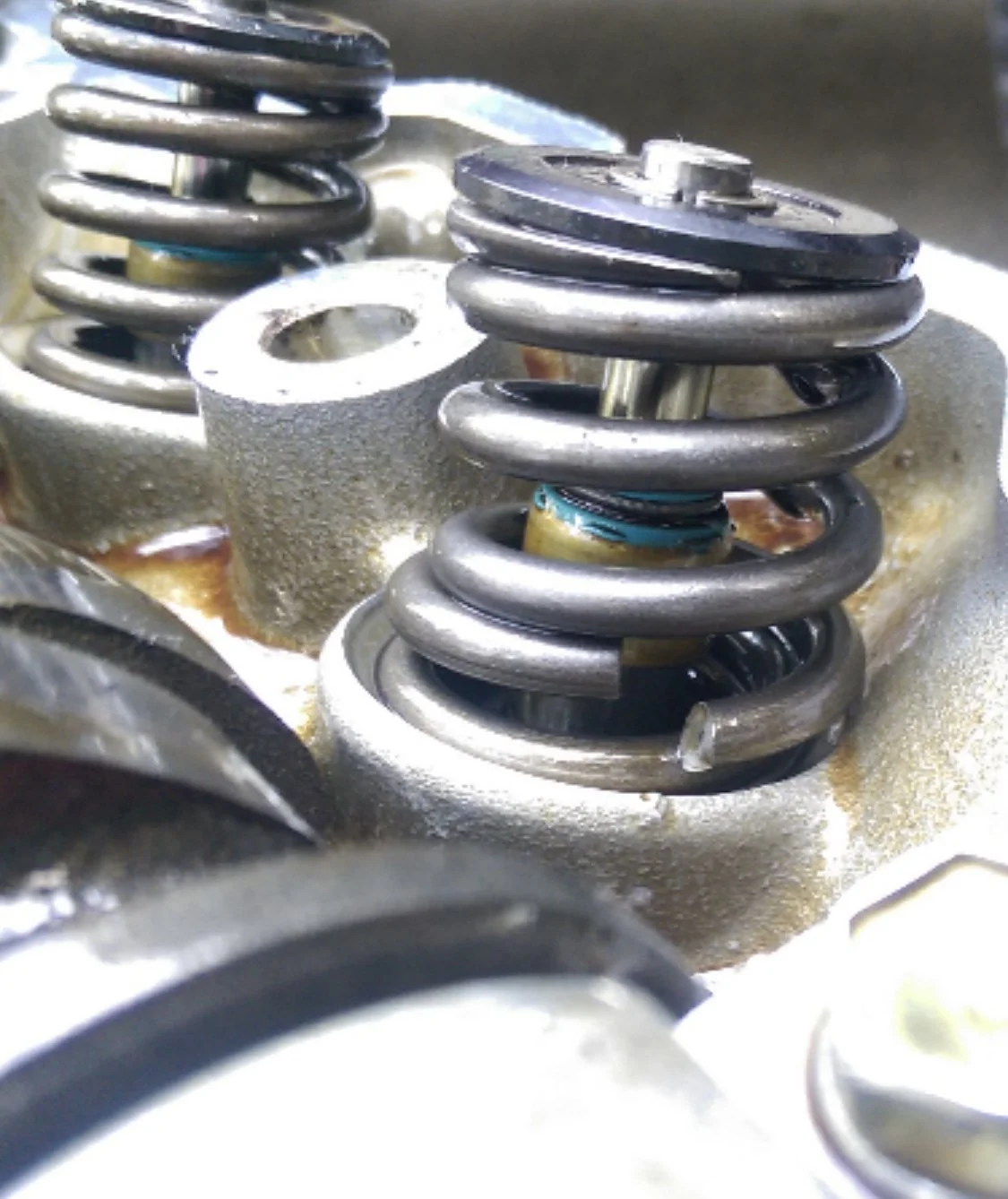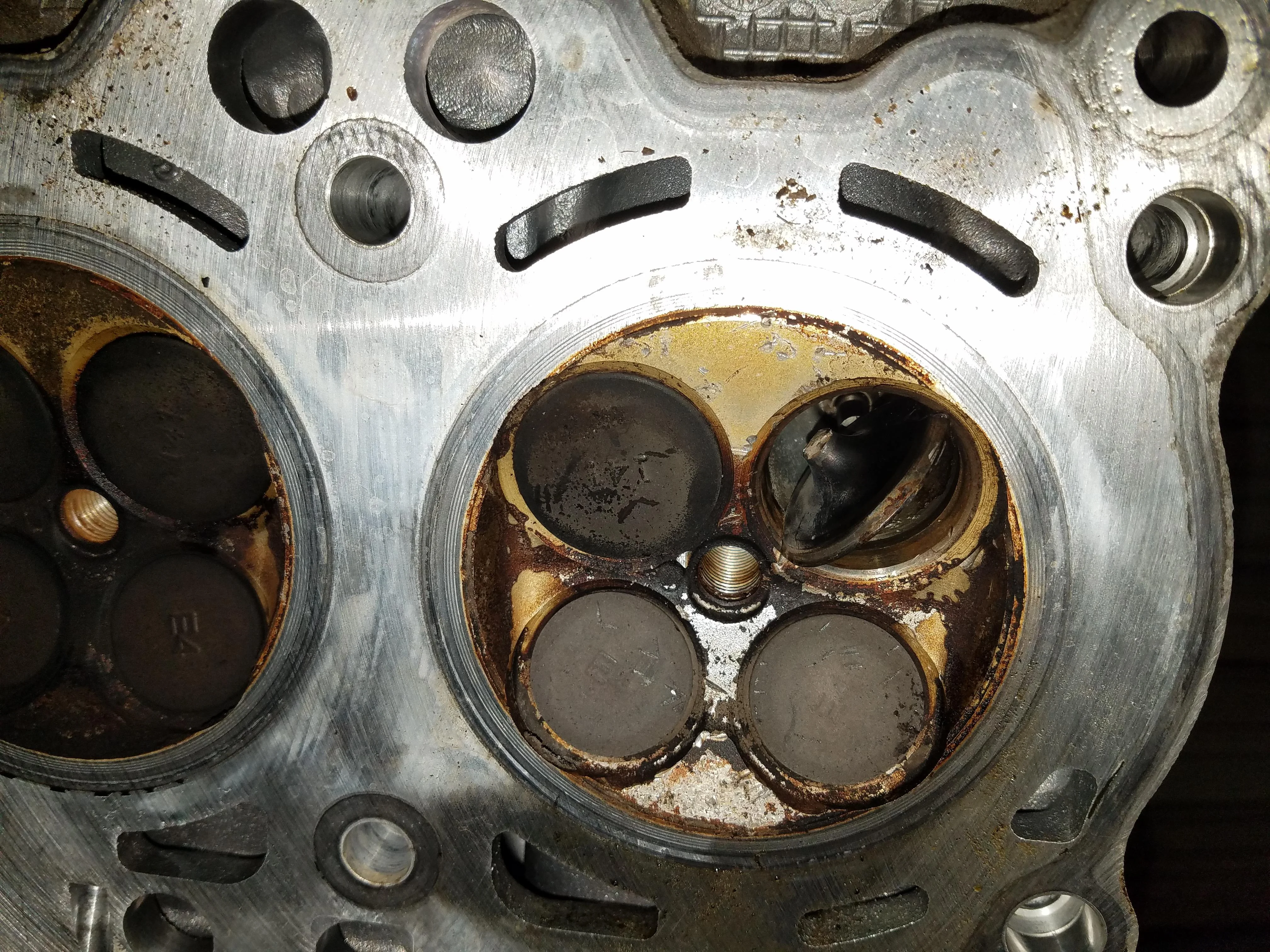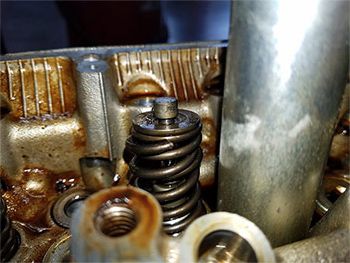


Valve springs play a crucial role in the operation of an internal combustion engine. They are responsible for keeping the valves closed during the compression and combustion strokes, and for allowing the valves to open and close at the appropriate times during the intake and exhaust strokes. A broken valve spring can have severe consequences for the engine's performance and can potentially lead to catastrophic engine failure if not addressed promptly.

The first indication of a broken valve spring is usually an unusual noise coming from the engine bay. It might start as a faint ticking or tapping sound, which can be easily mistaken for a loose heat shield or exhaust leak. However, as the problem worsens, the noise becomes more pronounced, especially at higher RPMs.
| Symptom | Description |
|---|---|
| Unusual Engine Noise | Ticking, tapping, or rattling sound |
| Rough Idle | Engine misfiring or running rough |
| Loss of Power | Noticeable drop in engine performance |
Another early symptom is a rough idle or misfiring cylinder. As the valve spring loses tension, it can cause the valve to close improperly, leading to compression loss and misfiring. This can also result in a noticeable drop in engine power and performance.
Valve springs are subjected to extreme stress and millions of cycles during their lifetime. Over time, this constant flexing can lead to metal fatigue and eventual failure of the spring. However, there are several other factors that can accelerate the process:
Improper Selection or Installation
Valve Float
Manufacturing Defects
Using the wrong valve springs or installing them incorrectly can cause binding, uneven wear, or loss of pressure, leading to premature failure.

At high RPMs, the valve springs may not have enough pressure to control the valves, causing them to "float" and potentially strike the pistons. This is known as valve float and can cause significant damage to the valves, pistons, and springs.
In rare cases, manufacturing defects like inclusions or improper heat treatment of the spring material can lead to premature failure.
As a mechanic, diagnosing a broken valve spring involves a combination of visual inspection and specialized tests. First, I'll listen for any unusual noises coming from the engine and check for misfires or loss of power. Then, I'll perform a cylinder leak-down test to identify any compression loss in a specific cylinder.
If the valve cover is accessible, I'll remove it and visually inspect the valve springs.
| Signs of Failure |
|---|
| Broken spring pieces or coils |
| Burnt or damaged valves |
| Low or zero compression in one cylinder |
| Excessive valve train noise |
Once a broken valve spring is confirmed, the repair process begins. Here's a general overview of the steps involved:
Remove the valve cover and inspect the springs and valves.
Use a spring compressor tool to remove the keepers and retainers.
Remove the broken spring and valve (if damaged).
Clean all components and the cylinder head surface.
Install a new valve spring, valve (if needed), and keepers.
Adjust the installed spring height if required using shims.
Reinstall the valve cover with a new gasket.
Throughout the process, I handle the new springs carefully to avoid damage and use assembly lube on the valve stems and springs. I also verify that the new spring pressure is correct for the camshaft specifications.
| Tips |
|---|
| Handle new springs carefully |
| Use assembly lube on valve stems and springs |
| Verify spring pressure is correct for camshaft specs |
| Replace all springs if one fails |
| Upgrade to higher quality springs for performance builds |
To prevent valve spring failures, I always recommend:
Following the manufacturer's service intervals for valve adjustments
Using high-quality valve springs rated for your engine's operating range
Ensuring proper break-in procedure for new cams/springs
Avoiding over-revving or abusive driving that can cause valve float
Inspecting valve train components regularly for wear
As for the cost, replacing just the valve springs can range from $100 to $400 for a performance upgrade set. However, if there's internal engine damage, the costs can escalate rapidly.
| Repair Cost |
|---|
| Valve spring set (performance upgrade): $100-$400 |
| Machine shop valve job (grind valves, etc.): $300-$800 |
| New cylinder head (if damaged): $500-$2,000 |
| Engine rebuild (severe internal damage): $2,000-$6,000+ |
Doing the spring replacement yourself can save considerably on labor costs, but any internal engine damage will require the expertise of a professional mechanic. Proper maintenance and using quality components is essential to avoid these expensive repairs.
As a mechanic, I've seen my fair share of broken valve springs and the havoc they can wreak on an engine. While it's a common issue, it's also one that can be prevented with proper maintenance and attention to detail.
If you ever hear that dreaded ticking noise or experience any of the symptoms I've mentioned, don't hesitate to bring your vehicle in for inspection. Catching a broken valve spring early can save you from costly repairs down the line.
And remember, prevention is always better than cure. Follow the manufacturer's recommendations, use quality parts, and drive responsibly. Your engine (and your wallet) will thank you for it.
A broken valve spring typically produces a distinct ticking, tapping, or rattling noise from the engine, which may become louder at higher RPMs.
The lifespan of valve springs can vary greatly depending on the vehicle, driving conditions, and maintenance, but they typically last between 60,000 to 100,000 miles.
Yes, if left unaddressed, a broken valve spring can lead to more severe issues like bent valves, damaged pistons, and potentially catastrophic engine failure.
No, it is not recommended to continue driving with a broken valve spring, as it can cause further damage and potentially lead to engine failure.
Valve springs cannot be repaired once they are broken or damaged. They must be replaced with new ones.
The time required to replace valve springs can vary, but a skilled mechanic can typically complete the job in 4-8 hours, depending on the vehicle and extent of the repair.
Yes, neglecting regular maintenance, such as valve adjustments and oil changes, can contribute to premature valve spring failure due to increased wear and tear.
Yes, performance modifications like high-lift camshafts or aggressive valve spring upgrades can increase the stress on valve springs and lead to premature failure if not properly engineered.
To prevent valve spring failure, follow the manufacturer's recommended maintenance schedule, use high-quality parts, avoid over-revving the engine, and have the valve train inspected regularly for wear.
Whether valve spring failure is covered under warranty depends on the specific circumstances and the terms of the vehicle's warranty. In some cases, it may be considered a maintenance item and not covered.

Sarah isn't your average gearhead. With a double major in Mechanical Engineering and Automotive Technology, she dived straight into the world of car repair. After 15 years of turning wrenches at dealerships and independent shops, Sarah joined MICDOT to share her expertise and passion for making cars run like new. Her in-depth knowledge and knack for explaining complex issues in simple terms make her a valuable asset to our team.













